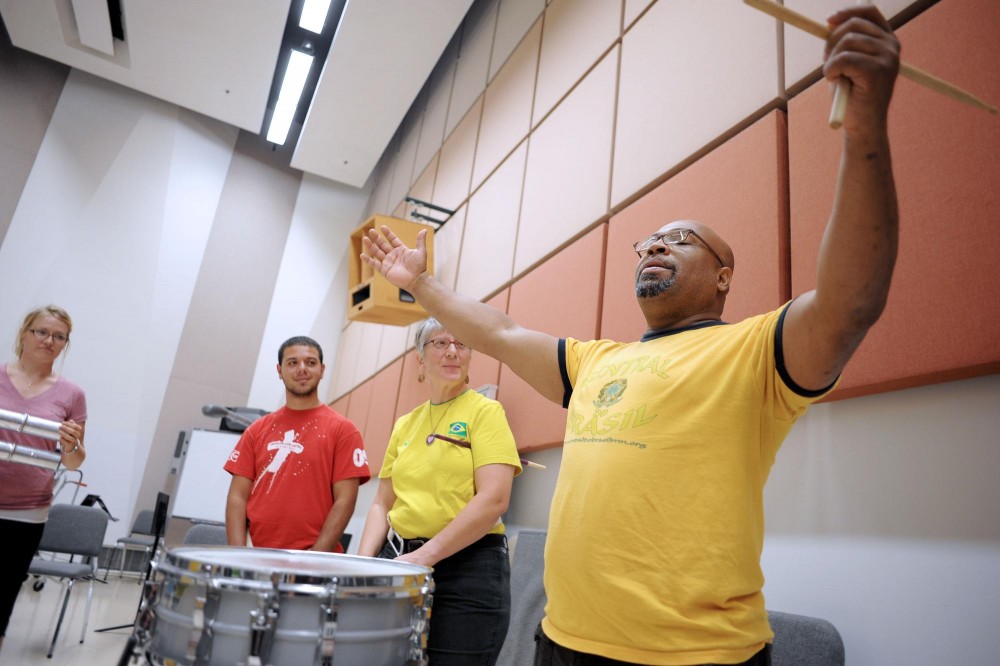Eliezer Santos doesn’t have a doctorate in musicology, nor is English his first language. In many ways, he is not the typical University of Minnesota professor.
But through an initiative created last year by the School of Music, Santos can teach students the art of Afro-Brazilian percussion every two weeks with a University professor.
âÄúHe can teach anybody to samba in one hour,âÄù said Scott Currie, a School of Music instructor who collaborates with Santos in a one-credit samba course.
The program is one of the ways the school is looking to increase student learning without hiring new faculty.
âÄúWe leverage resources that are available to us in a time when we really canâÄôt afford to be adding new faculty to our programs,âÄù said David Myers, the schoolâÄôs director.
He said the Creative Instructional Residencies Initiative, which began last year, brings in experts from the community. The collection of artisans, which include the Parker String Quartet and the artistic director from the Minnesota Opera, doesnâÄôt just come in for a performance, but for a âÄúlearning outcome.âÄù
Unlike visiting performers, experts like Santos contribute to the classroom throughout the semester.
Myers said hiring community members in conjunction with classes is much more economical than hiring new faculty members, because the school isnâÄôt required to offer artists the benefits that come with a full-time faculty position.
For their help, the artists are paid up to $7,500, which does not come out of money that would be used to hire faculty, he said.
âÄúThe professors determine the curriculum and the guest artists then help to enhance and enrich that curriculum in important ways,âÄù Myers said.
He said working with professionals in the Twin Cities also builds strong community partnerships.
Currie said that through Santos, students have had the opportunity to play percussion in nightclubs and perform in parades.
Students learn to play different instruments, like the agogo bells or the pandeiro, a Brazilian tambourine, and sing in Portuguese.
Maggie Catambay, who plays the agogo bells, said the class has inspired her to learn Portuguese.
âÄúI got books and tapes so I could translate the songs,âÄù said Catambay, who has been taking classes periodically since her graduation from the University in 1962.
Neither Catambay nor her husband Alejandro played instruments before they took the class by chance last spring semester.
âÄúWe had so much fun in it we decided to take it again this fall,âÄù Catambay said.
With SantosâÄôs participatory and play-by-ear instruction, Currie said the 15 students who make up the class can learn to âÄúgroove.âÄù
âÄúIt takes students who ordinarily wouldnâÄôt be involved with this kind of thing and pulls them in,âÄù Currie said. âÄúIt opens up whole realms of creativity and musicality for them.âÄù








